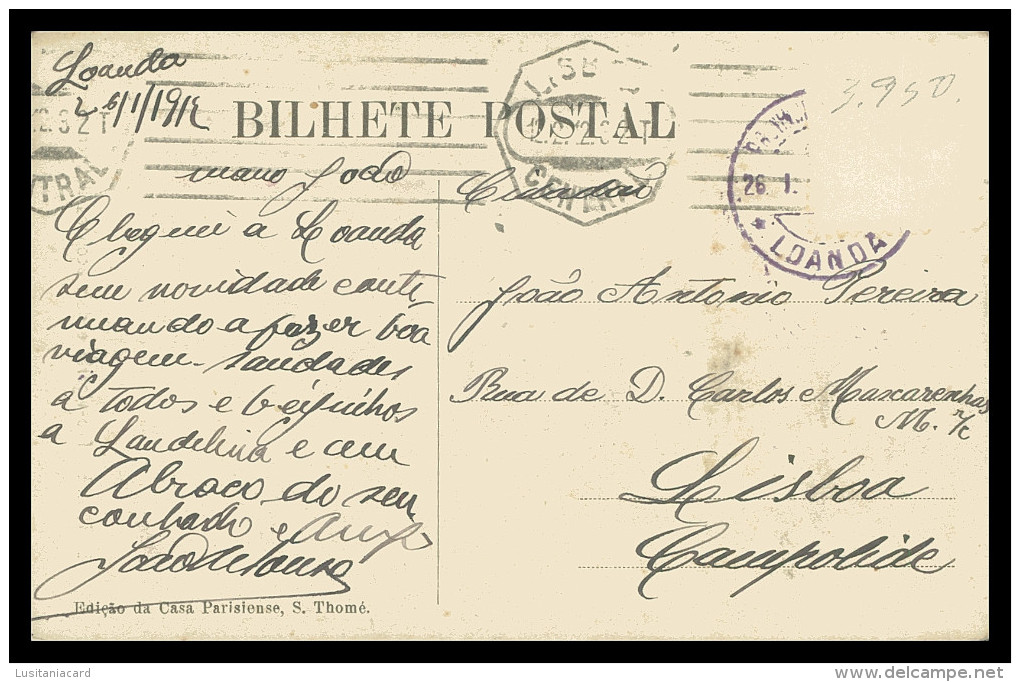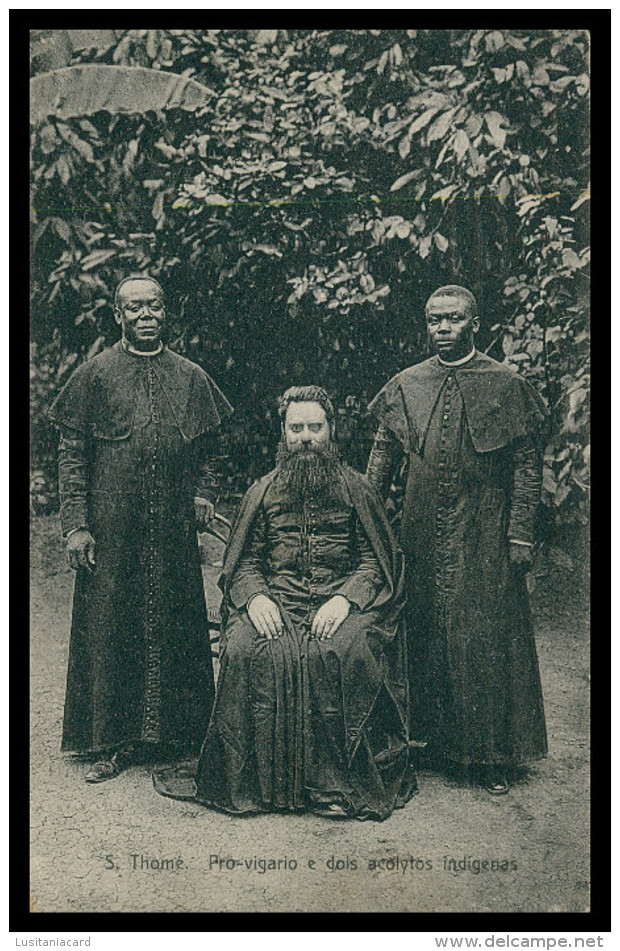

|
| SÃO TOMÉ E PRÍNCIPE | SÃO TOMÉ AND PRÍNCIPE |
São Tomé is the capital and largest city of the Central African island country of São Tomé and Príncipe. Its name is Portuguese for "Saint Thomas". Founded in the 15th century, it is one of Africa's oldest colonial cities. The municipality has a population of 71,900 (2015).
 São Tomé and Príncipe, officially the Democratic Republic of São Tomé and Príncipe (República
Democrática de São Tomé e Príncipe), consists of two archipelagos around the two main islands of São Tomé and
Príncipe, about 150 km apart and about 250 and 225 km off the northwestern coast of Gabon. With a population of 201,800 (2018),
it is the second-smallest and second-least populous African sovereign state after Seychelles. The islands were uninhabited until their discovery in 1470 by
Portuguese explorers João de Santarém and Pedro Escobar. Gradually colonized and settled throughout the 16th century, they collectively
served as a vital commercial and trade centre for the Atlantic slave trade. The rich volcanic soil and proximity to the equator made São Tomé
and Príncipe ideal for sugar cultivation, followed later by cash crops such as coffee and cocoa; the lucrative plantation economy was heavily dependent
upon enslaved Africans. Cycles of social unrest and economic instability throughout the 19th and 20th centuries culminated in peaceful independence in 1975.
São Tomé and Príncipe have since remained one of Africa's most stable and democratic countries.
São Tomé and Príncipe, officially the Democratic Republic of São Tomé and Príncipe (República
Democrática de São Tomé e Príncipe), consists of two archipelagos around the two main islands of São Tomé and
Príncipe, about 150 km apart and about 250 and 225 km off the northwestern coast of Gabon. With a population of 201,800 (2018),
it is the second-smallest and second-least populous African sovereign state after Seychelles. The islands were uninhabited until their discovery in 1470 by
Portuguese explorers João de Santarém and Pedro Escobar. Gradually colonized and settled throughout the 16th century, they collectively
served as a vital commercial and trade centre for the Atlantic slave trade. The rich volcanic soil and proximity to the equator made São Tomé
and Príncipe ideal for sugar cultivation, followed later by cash crops such as coffee and cocoa; the lucrative plantation economy was heavily dependent
upon enslaved Africans. Cycles of social unrest and economic instability throughout the 19th and 20th centuries culminated in peaceful independence in 1975.
São Tomé and Príncipe have since remained one of Africa's most stable and democratic countries.
Glass no. 4501 [left] is labeled S. Thomé / Pro-vigario e dois acolytos indigenas ('São Tomé / Pro-vicar and two indigenous acolytes'). A pro-vicar administered a diocese in the absence of a bishop. The diocese of São Tomé was established in 1534 as a suffragan to the archbishopric of Funchal. In 1551 it became suffragan to the archbishopric of Lisbon. It lost territories in 1596 to the newly established diocese of São Salvador do Congo (today diocese of Mbanza Congo, Angola), to which it became suffragan in 1676. It lost further territories in 1741 to establish the vicariate apostolic of Ava and Pegu (today metropolitan archdiocese of Yangon, Myanmar), in 1818 to establish the apostolic vicariate of Good Hope and adjacent territories (today diocese of Port-Louis, Mauritius), and in 1842 to establish the apostolic prefecture of The Two Guineas and Senegambia (today metropolitan archdiocese of Libreville, Gabon). In 1844 it became again suffragan to the archdiocese of Lisbon, and in 1940 was made suffragan to the archdiocese of Luanda (Angola). In 1957 it was renamed diocese of São Tomé and Príncipe. As of 1984 it is not suffragan to another archdiocese but is immediate to the Holy See. In its history, the diocese quite often remained without an ordained bishop and therefore was overseen by appointed administrators. Glass no. 4501 likely dates from some time between 1900 and, say, 1910. According to sources listed below, there indeed was no ordained bishop between 1819 and 1984.


Souvenir glasses like those of this collection were frequently made based on the pictures on postcards of the time. The picture was copied and transfered to
the glass using a transfer print, which then was coloured by hand.
Compare glass no. 4501 [left] with a postcard sent in 1912(?) from São Tomé (here still spelt São Thomé)
to Lisbon via Luanda (here still spelt Loanda) [right] (see external link).
[https://en.wikipedia.org/wiki/S%C3%A3o_Tom%C3%A9; https://en.wikipedia.org/wiki/S%C3%A3o_Tom%C3%A9_and_Pr%C3%ADncipe;
http://www.gcatholic.org/dioceses/diocese/ztom0.htm; https://www.catholic-hierarchy.org/diocese/dstep.html;
https://gcatholic.org/dioceses/diocese/ztom0.htm?tab=bishops]
![[scale]](lineal.jpg)